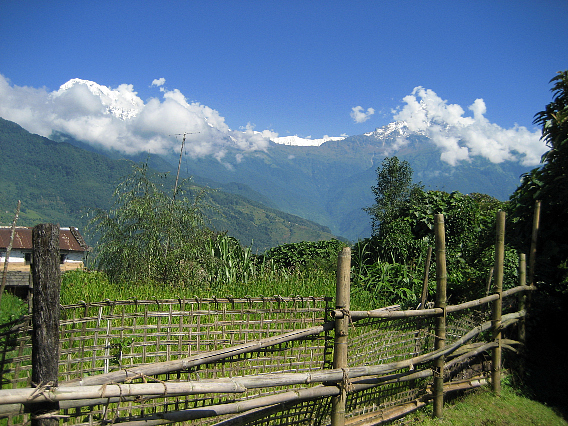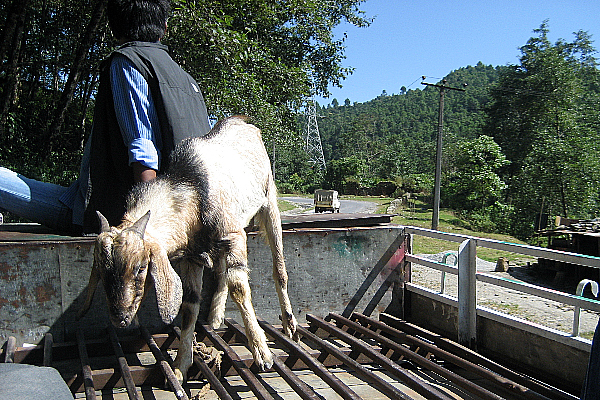
A stone walkway stretches hundreds of miles into the Himalayas, up steep cliffs and over narrow ridges. It’s the Nepali merchant’s version of the Great Wall, and over the past decades it’s become one of the most popular trekking routes in Asia, with porters and teahouses ensuring in-town amenities continue well into the mountains. Some tourists play hand-held stereos as they hike.
Our five-day trek into the Annapurna range began with a steep ascent from Phedi to Dhumpus. I carried a backpack filled with Snickers, books, water, iodine (to treat the tap water), and clean clothing.
Soon into the first day, we met a sandal-clad boy from Landruk who was walking seven hours through the mountains with his girlfriend to go home for the annual Desain festival (which is similar in style to Thanksgiving, with families coming together to feast and give thanks). When I was a college student, I thought it was a pain to take plane back or long car ride back to Connecticut. These people trek through mountain ranges!
We hiked about 30 hours in five days. Nepali porters, meanwhile, hike equal distances with huge loads strapped over their heads and resting on their backs. One porter often carries seven or eight travelers’ backpacks. I saw one carrying a crate loaded with chickens.
We followed the Annapurna Base Camp route north for the first two days. On our third day, it began pouring soon after we left Deurali. At 3,300 meters elevation we found ourselves stranded inside a cloud at the crest of a mountain. We hid under a rock ledge for an hour and then jogged the remaining distance to Ghorapani where we warmed our wet clothes and extremities by the heat of a guesthouse fire.
On day four, we woke at 5 a.m. to climb Poon Hill and see the sun rise over the Annapurna range of the Himalayas. It was pitch black when we started out, and we could only see by aid of a cell phone light. But as the sun rose it only revealed a sky full of clouds.
I was heart-broken. This was supposed to be one of the most spectacular mountain views IN THE WORLD. Or at least one of the best views of the Annupurna mountain range. We’d hiked too many miles to have our hopes simply dashes by a dense collection of H2O suspended in the atmosphere. I remembered this quote from the book “The Road to Kathmandu,” which I recently read: “You have to abandon a time-table, for you must not try to regulate this dimension, and you must move at a pace set by events outside your control.”
So we stayed in town an extra 24 hours. The next morning I woke again before sunrise to climb Poon Hill. Again, the sun didn’t rise. A sharp cloud line appeared to have severed the peaks from every mountain.
The clouds reminded me of what incredible luck I’d had several weeks earlier in seeing Mount Everest cloud-free for both sunrise and sunset.
Our last day, we descended 1,200 meters. My ears popped as we dropped. My knees vibrated painfully with each step down. Claire tripped on a stone and took a hard dive outside Tikhedhunga and limped the rest of the walk to Naya Phul.
Back at the paved road, we hopped on the roof of a bus for the 90-minute ride back to Pokhara, our rest stop before bussing on to India. I sat beside a goat.



